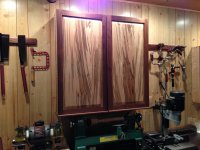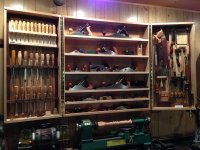ear3
Member
I'm constructing a long floating shelf that I'll be hanging with wooden cleats worked into the body of the shelf, and my question is: is it better to use 3/4 plywood for the cleats, as opposed to some kind of hardwood, in order to forestall any wood movement that might mess with the leveling of the shelf? Or does the small size of the cleat (a 1x4 cut in half, maybe 16" long) mean that wood type is not really a factor?



